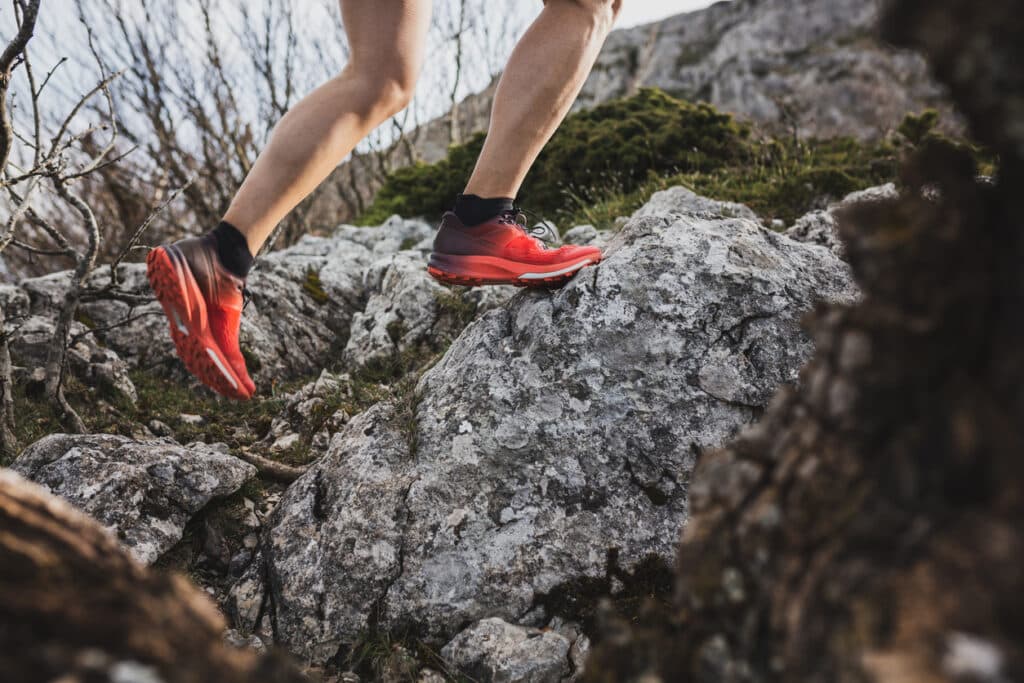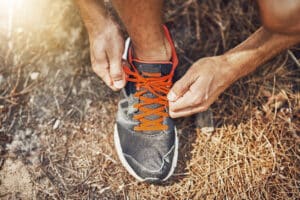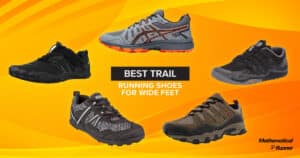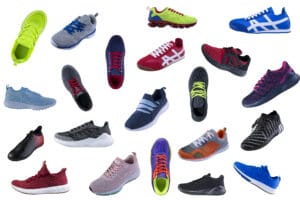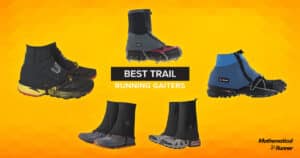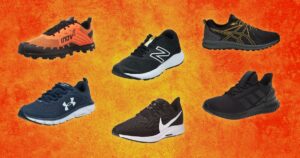Lightweight trail runners have gained popularity among a majority of runners and shifted their focus from heavy hiking shoes or boots that cover some part of the legs as well. This option makes them feel more comfortable and also appears stylish to them.
Now that there is a wide range of these kinds of footwear that somewhat appear similar as well, it gets challenging to get familiar with them and purchase one that is best suited for your needs. Because of their differences, you may need a complete Trail Runners Vs. Hiking Shoes guide. Don’t worry about it at all. I’m here to help you out!
Hiking shoes and trail running shoes mainly differ in their weights, resistance to damage, traction, and the degree of cushioning in the soles. Those who are into running on rocky and steep terrains should prefer hiking shoes while wearing a pair of trail runners is better for less dangerous tracks.
In this piece of writing, I have mentioned some key distinguishing factors of these shoes that will facilitate you in getting a better idea about each of them. Moreover, I have also listed some best-quality products to aid you in decision-making.
Weight Of Shoes:

When it comes to the weight of a pair of a trail runner and a pair of hiking boots, boots weigh a few pounds more than runners. Therefore, hikers first change from high-ankle boots and then to hiking shoes which are even lighter for convenience. Some just opt for trail runners after experiencing running in boots.
For better understanding, imagine putting on the shoes which weigh approximately 2 pounds and then trying another pair that weighs one-and-a-half pounds. It makes sense that it will be easier for you to take steps forward with lighter footwear as less pressure will be exerted on your feet and legs.
Suitability:
However, one should take two aspects into consideration before preferring less weight over more weight. Generally, reduced weight means less cushioning or ankle and heel support. It means that your feet will be less protected when you cross rocks with sharp edges or slippery obstacles.
Furthermore, trail shoes with average support might cause extreme discomfort in those who have weak legs and feet or frequently suffer from aches in these areas. Sportsmen with rather flat feet will also feel fatigued soon if they have planned to run more than 15 miles regularly.
If your case is similar to the above-mentioned conditions or you want the chances of injuries to be minimum while hiking, I highly suggest trying light-weight hiking shoes (about 2 pounds in weight) or rugged trail shoes. Those who do not require much support and feel more at ease with lighter items can opt for savings in weight.
Support And Padding Material:
Hiking shoes include more padding in the toe box, and ankle and heel regions which enhances the support for dealing with significantly uneven and rugged terrain. For example, you will observe or read about rubber rand and toe caps in a majority of hiking shoes. This is why most hikers still purchase hiking shoes as compared to trail runners.
The construction of these items is more strong so that it does not wear off and thus serves the purpose excellently. The midsole is made of less-grippy and stiff material, commonly rubber, while the layer of the upper has thicker textile. These improvements are especially important to lessen the possibility of ankle-twisting and tripping over the tracks which are rarely maintained.
On the other hand, trail runners do come with ample cushioning and have durable materials as well. However, in the view of fast movement, manufacturers do not add heavy foaming or harder materials so that features like seamless running, flexibility, and less weight are not compromised. Trail runners also come in different varieties for multiple off-road tracks and include various levels of support material. Those for hard paved tracks with gravel and muddy trails include less support than those for rugged and rocky terrain.
Suitability:
It is better to select hiking shoes if you are interested in hiking only. In case you desire both normal weight and some support as well, there are some models available in the market that meet these conditions and will facilitate in maintaining your speed.
Some of the great items are released by Salomon and La Sportiva, which you should check out if you are fond of a day hike and do not carry heavy loads.
Fortunately, there is a wide range of running shoes. You can also choose from trail runners that have sufficient cushioning for ankle protection and are made from stiff material to ensure safety in this case. Remember that this suggestion is for the less steep and dangerous areas.
If you have been running on trails for a while and now heading for hiking tracks as well, I recommend comparing your speed using a pace calculator with your athlete shoes in which you feel the most comfortable which might assist you in getting familiar with what kind of shoes you actually want.
Durability:
Another factor that separates these shoes from each other is their half-lives. Since hiking shoes are designed with components that are stiffer from the outside, it improves their resistance to external damage.
Manufacturers have to be extra careful in selecting the material for the upper, midsole, outsole, and other portions so their footwear does not disappoint their customers who hike frequently carrying heavy backpacks on their shoulders.
Most of the trail runner models in stores have lighter designs and have soft rubber in their outsoles. In addition, since they do not include extra protection such as long lugs, the visual appeal will change after a few months of use as the outer starts wearing off.
Suitability:
It is not suitable to use trail runners particularly barefoot and medium-padded for extremely uneven paths in mountainous areas. The parts of your shoes will start separating after a few visits. Still, if you are thinking of giving a chance to trail runners, it is necessary that you choose rugged trail footwear which has excellent shock absorbance to achieve maximum benefits and strength close to hiking shoes.
Traction:
Traction is an aspect which one cannot ignore while going through the specifications of running shoes. Mainly there are two factors that contribute to traction provided by these products: pattern on the outsole and midsole and their material.
Generally, there is a major distinction in both these properties when it comes to trail runners and hiking shoes. The latter include either hard rubber in their soles or ethylene-vinyl acetate (EVA), that lead to stiffness and allow comfortable strides on treacherous paths.
Furthermore, their soles have ridges or similar patterns which ensures maximum grip on greasy rocks with fungus. In addition, the upper is made from nylon or strong leather which protects the foot to the maximum.
Trail running shoes have flexible and less stiff materials so that your feet feel minimum pressure or load while heading forward. However, these characteristics in construction might not work well in steep areas especially if you are progressing downhill on rocky areas.
Suitability:
The suitability largely depends upon personal preference as well. Many skilled backpackers who cover large distances on risky tracks prefer trail runners due to improved responsiveness and free movement which make it seem like you are floating.
For those who are about to begin this healthy activity, I suggest opting for hiking shoes which is a more secure option.
In case you are looking for a pair of trail runners and considering running on wet and muddy tracks, you should go for the footwear with deep and long lugs in the outsole which offer enough friction in these areas. On the other hand, shoes with less deep tread are best for moving on rocky trails with gravel.
Breathability:
When it comes to breathability and keeping the feet fresh for hours, trail runners take the lead. It is because companies add thinner materials in these shoes, which also contributes to their lighter weight than hiking shoes. Almost every model has a characteristic mesh upper that lets the air inside through the breathable upper. Hiking boots or shoes do not allow air passage as textile used in their uppers is leather or synthetic material such as nylon for enhanced security.
Suitability:
During summers when sun shines brightly for most of the days, the trail runners provide more comfort by the design that supports ventilation.
Not only does your skin feel less hot, but also it remains fresh as less sweat is produced and evaporated immediately, allowing you to enjoy the physical exercise more by keeping your feet dry. Also, if the trails you choose are along the riverside, it is better to put these shoes on.
In winters, it would be wise to prefer hiking shoes over trail runners. They will give the best sensation of insulation and your feet will remain warm as there will be the slightest possibility of cold winds coming in contact with your skin.
Water Resistance
Several trail running shoes are not built to resist water since the air spaces in the upper can let the water in. It makes the experience less pleasant during rainy days or crossing the loose muddy areas as your footwear will completely get soaked.
Fortunately, there are some designs available these days which include a great waterproofing mechanism to deal with wet surfaces or rain. However, they might be more costly than the other shoes which do not provide this benefit.
Most of the hiking shoes are made of waterproof materials that make them durable as well. It means you will find more versatility in this case than other shoes.
Here, the designers do not have to add enhancements since the upper, such as leather, and outsole are already water resistant. For best results, wearing high-top shoes is a better choice than low-top ones.
Suitability:
During days when there are hail storms or snowfall, it is necessary to protect yourself from catching a cold. Thus, I suggest wearing hiking shoes for steep and rough tracks or water-proof trail running shoes for less rough and uneven trails.
In summers, one finds comfort in dry feet rather than getting them swamped. So it is better to opt for breathable trail runners for off-road tracks or breathable hiking shoes (let a little air inside) to serve the purpose.
Comparison Table
|
Features |
Hiking Shoes |
Trail Running Shoes |
|
Durability |
More durable and strong |
Less durable |
|
Breathability and water resistance |
Poor breathability, waterproof |
Great breathability, porous material |
|
Weight |
More weight |
Less weight |
|
Friction and grip |
Extraordinary friction |
Medium to excellent traction |
|
Cushioning |
Intense cushioning |
Normal cushioning |
Best Trail Running Shoes And Hiking Shoes:
● Merrell MQM Flex 2 hiking shoes
● La Sportiva Bushido II hiking shoes
● Merrell’s Men’s Moab 2 Hiking Boots
● Salomon’s Speedcross 5 trail runners
● New Balance 608 V5 trail runners
Frequently Asked Questions
Yes, a person can use trail running shoes for walking. They have less weight yet have sufficient support material in the inner to allow comfortable strides.
Yes, Nike trail shoes are ideal for hikes that involve less degree of rough and sharp, steep turns.
Yes, you can wear hiking shoes for trails covered with snow. These shoes do let the water in and also include great ankle protection which helps moving on slippery surfaces.
Conclusion
In most cases, it becomes challenging to tell hiking shoes and trail runners apart since most the trail footwear are built in a similar fashion as the other kind of products.
Therefore, there is a high possibility that one gets a fit that starts causing problems after some time. However, after doing a thorough research and knowing what you desire proves beneficial in this situation. I hope that this read has assisted you and cleared several confusions in your mind.
RELATED ARTICLES

